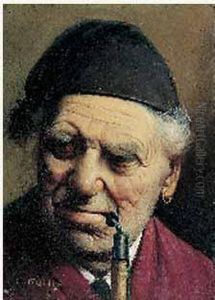Johann Heinrich Konig Paintings
Johann Heinrich König was a German sculptor who belonged to the Rococo period, an artistic movement which emphasized grace, ornamentation, and asymmetry. Born in 1705, König's early life is not extensively documented, but it is known that he was active during a time when the Rococo style was flourishing, particularly in the decorative arts and architecture.
König's work as a sculptor reflected the elegance and lightness characteristic of the Rococo. He was particularly adept at creating intricate details and flowing lines in his sculptures. His works often featured playful cherubs, elaborate foliage, and soft, curving forms. Despite his skill and contributions to the style of the period, König did not gain the same level of fame as some of his contemporaries, such as Johann Michael Feuchtmayer or the Asam brothers, who were renowned for their work in southern Germany.
Throughout his career, Johann Heinrich König produced sculptures for both religious settings, such as altarpieces and statuary for churches, and secular commissions, which included garden sculptures and decorative elements for buildings. His approach to sculpture was typical of the Rococo period, focusing on decorative appeal and the use of sculpture to complement the architectural spaces in which they were placed.
König died in 1784, leaving behind a body of work that, while not as well-known today, contributed to the rich tapestry of Rococo art. His sculptures still can be found in various locations across Germany, serving as a testament to the artistic movements of the time and the skill of sculptors like König who helped to shape the aesthetic landscape of the 18th century.
